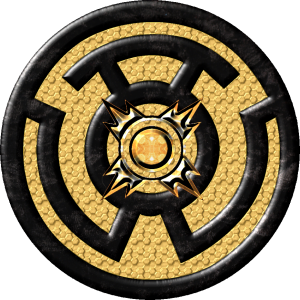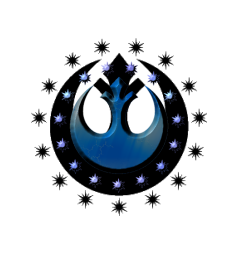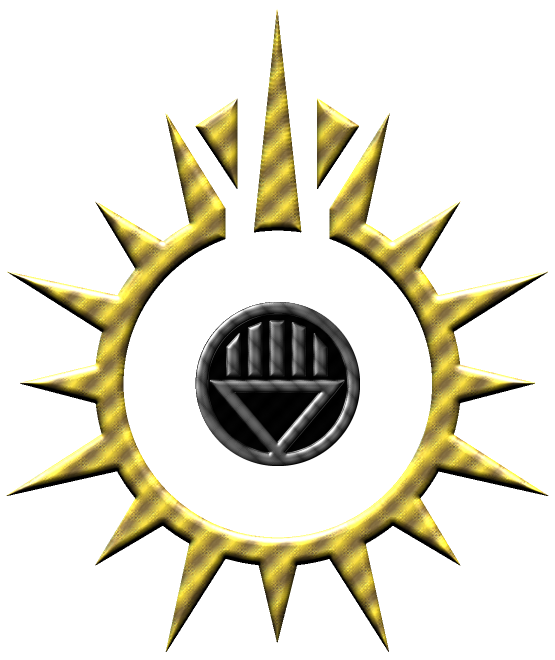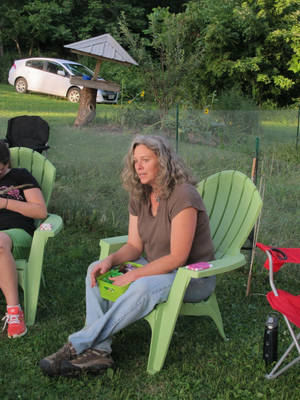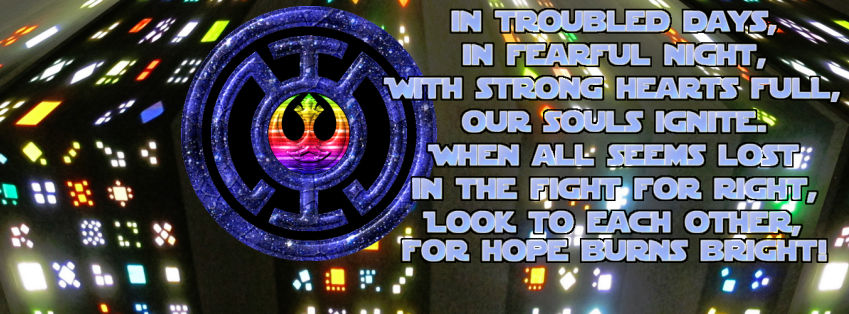though some galleries are based on type instead.
The Raccoon Journals
Steampunk Fashion: Use of Color Theory and Metals
For those unfamiliar with the term, Steampunk is a both an actual successor of sorts and a spiritual predecessor to Cyberpunk, but where the latter draws from visions of a dystopian and highly technological future, Steampunk draws from the past, or rather a re-imagined past. This past originally centered around the Victorian era of England, but has expanded to potentially include the Edwardian era as well as fashions from abroad, particularly the United States, as well as alternate worlds that follow the Steampunk aesthetic. As you might guess, a major hallmark of Steampunk is steam power; more modern vehicles and devices are often recreated using cruder methods of the time, including clockworks, steam power, and electricity in tubes and bulbs. It's reverse engineering science fiction and fantasy, and while some Steampunk tries to stay more realistic, making use of inventions and ideas that were present at the time but not widespread or soon would be emerging, some goes for the more fantastic, with automatons and strange creatures and all manner of bizarre devices, or else real objects decades or even centuries ahead of the time made with the technology of the day (and functioning with varying levels of efficiency).
Steampunk has become many things; a genre of literature, a style of music, a mode of expression. As an art form, Steampunk has risen from a mixture of classic tales such as Disney's version of 20,000 Leagues Under the Sea and H.G. Wells' The Time Machine to a thriving movement that includes numerous books, movies, television shows, bands, and other creative outlets. What I am looking at here are the clothing and accessories that have grown out of this, and how I feel they can be improved. Before we take a look at how you can use color in your outfits, let's take a look at Steampunk in fashion in general.
Because of this rich and varied heritage, Steampunk can meld the looks of the time with far more fanciful ideas, and often incorporates clockworks, lace, militaristic themes, brass and copper, wood, leather, and various other materials and themes available at the time, or that we imagine COULD have been available at the time. Most often when drawing from the Victorian era we think of the late 1800s, but the Industrial Revolution ran from roughly 1750 to 1850, and many innovations that lead to Victorian fashion came about in the mid-1800s, while Victorian styles outlived Queen Victoria herself by a good eleven years or so, not really fading until 1912, well into the Edwardian era. I feel, therefore, that there's a lot more we can draw upon, from across Victorian and Edwardian England and the frontiers of the British colonies and United States. Modern influences often come from the Goth, Punk, Rivethead, Gothic, and Lolita fashion styles, and industrialized elements related to machinery, inventions, and those who build or handle them come in, often adding a more ragged or warped element.
Note that this isn't an attempt to dictate the 'rules' of Steampunk. There are no rules. While it might draw some from history, and I hope to do so here, there's a great deal more imagination and creation involved, and nobody can or should try to place boundaries on that, I believe. Everybody will have their own vision of Steampunk. This is mine at present.
Strictly speaking, Queen Victoria ruled from 1837 to 1901. Victorian fashion obviously didn't develop the instant she took the throne, though, and it continued to remain strong a good decade after her death, even as Edwardian fashions arose. Steampunk tends to draw mostly from the late 1800s and early 1900s, and you can often include World War I, as many industrial, aviation, and militaristic accents meld into Steampunk, since the genre tends to utilize many innovations created just before or during the 'Great War.'
Ironically, many think of Victorian fashion as more homespun and rough because they compare it to the neat industrialized products of today, yet many of its stronger aspects were made possible themselves by industrialization. The lock-stitch sewing machine was created mid-19th-century, lace machinery allowed it to be made at a fraction of the time and cost it used to take, new materials like rubber were imported from Britain's many colonies that made new materials and types of clothing possible, and chemists developed new, cheap bright dyes that replaced old animal and vegetable ones as well as allowed for a codification of colors. More and more over the course of the Victorian era clothes were manufactured, though custom and hand sewing could still be found.
Any good book on Victorian fashion, not to mention countless sites and even Wikipedia, can tell you about the many innovations in clothing introduced during this era, many of which are still with us today. Bowlers and blazers and goggles and tea gowns all came along, and plenty more besides. I leave it to the reader to look into this on their own.
Over time I've developed my own style of Steampunk, one I bring into every-day life. Being that we're not that well off financially, I make use of a lot of little tricks to add to my wardrobe. Thrift and second hand stores provide numerous opportunities to get vests, belts, suspenders, and colorful shirts and pants; hardware stores offer all manner of interesting accessories, and I keep an eye out for other odds and ends. You never know where you might find an interesting decoration; I've grown fond of using old skateboard ball bearings, for instance, which are not immediately identifiable to most but have a definite industrial-era look to them. I tend toward slacks and jeans myself (though since about 2014 I've come to lean heavily toward corduroy pants), and often decorate them with patches or attachments; among the items I've used as decorations are brads, studs, the aforementioned old skateboard ball bearings, grommets, a variety of nuts, bolts, and washers, and lengths of cord, leather, and chain.
Little touches go a long way. Lapel pins add a nice accent, and I like to make use of a variety of objects as ties, neckerchiefs, or ascots. Scarves, belts, cummerbunds, and really any sort of long fanciful length of cloth can be turned into a simple tie or ascot, adding a jaunty touch to your outfit. Furthermore, these can also be tied around arms or made into bandannas or hatbands, as can simple lengths of cord and ribbon. Adding garnishment to gloves and boots such as chains, bolts, metallic leafing or paint, and hand-sewing (often using metallic thread) can spice up an outfit.
Hats themselves are a major feature of Steampunk; once a necessity virtually in polite society, people don't wear hats as often now as they once did, so when you do wear one it gets noticed. Top hats, flat and Gatsby caps, and bowlers are pretty big in steampunk, but you can also make use of fedoras, and if you want to bring in a western or frontier element you can go with various Stetsons, slouch hats, and similar. Helmets are can also be modified, such as riding helmets. It's pretty easy to decorate a hat with patches, pins, ribbons, feathers, a new hatband, or other various accessories. One of my favorite hats, which gets noticed a lot, is a gray top hat with a black band to which I've added three tail feathers from our cockatiels and a silver ankh money clip. More recently I've further developed a wide assortment of hatbands of both military and western style for my ever-growing collection of hats, and often my hatbands are interchangeable, assuring that I have even more options.
A key feature of steampunk pageantry is the gadgetry. Goggles of course feature heavily, and there are numerous ways to purchase or make them. Welding goggles come in a number of styles, including some that fit comfortably over glasses. I like to replace straps with bands made by cutting apart old belts and attaching them with a mixture of brads, metallic thread, and various types of wire. With metal pressing growing as an art, sheets of metal and rolls of flat, wide wire are now more readily available and can be used in projects. Costume glasses can be transformed using leafing pens, paints, and other methods. I like to use ones with tinted lenses often, as they make an especially bold statement. Old binoculars, sunglasses, masks, and magnifying glasses are all things that can be taken apart and used to make goggles with your own unique flair.
I mentioned lapel pins above. Other pins also come in handy. You can make faux war medals, and find all manner of pins and pendants in thrift stores that can be turned into decorations. Pocket watches are a classic, and I wear a pocket compass I've made. Studs and chains can be interesting accents, as can tools and parts, as Steampunk often invokes a sense of inventing and crafting. I actually try to avoid the heavy use of gears you often see in Steampunk style because I feel that they are over-used to the point of being cliché nearly. It's not that I don't like gears and clockworks, but I prefer them to be functioning, or at least seem like they could, or else to be worked into the design more naturally. An example would be the hatband I made for a big black stetson hat I have, where I worked gears in on it in place of the similarly-shaped decorations it might often bear. I also favor a wide assortment of necklaces, pendants, trinkets, bracelets, and other odds and ends, many re-purposed from other items, such as a pair of brass wall hangings I turned into pieces of 'armor' for my bicep and thigh.
It's easy enough to bring Steampunk style into your everyday wardrobe. Vests and corsets stand out and add a touch of flare and style to any outfit. I own a variety of vests, from very proper three-piece-suit vests to flashier stand-alones, and in many sizes and styles. Some are leather, and I have quite a few that are brown or black. Other colors are quite appropriate, and I'll discuss color theory and Steampunk fashion below. Vests are practical, as you wear pins on them, place gadgets such as pocket watches and tools in the pockets, and have fun with the buckles and straps on them. Most of mine come from thrift stores, and I keep a constant watch for them. I also keep a watch out for online sales, particularly after holidays. One thing you can do to add to their flare is replace the buttons with ones more suiting your style, perhaps older-style metal buttons or even makeshift buttons in various classically Steampunk or Victorian shapes. Vests also add an extra layer of clothing that helps one keep warm in cold climes, so I'm quite fond of them. For women, if you don't want to wear a corset consider vests instead, as they can provide some of the look corsets are meant to offer while being more comfortable and more versatile.
Hats are a must in Steampunk style. There was a time when far more people wore hats than didn't, and doing so now allows you to make a statement and really stand out. I like to mix Victorian and Edwardian styles with Frontier and Western. I have a variety of Stetsons, slouch hats, and other wide-brimmed hats from the American West or Australia that I feel embody the Steampunk sense of adventure and exploration. I also do have a sizable collection of berets, Gatsby, flat, and other caps, bowlers, top hats, fedoras, and many others; in total my hat collection probably approaches something between seventy to a hundred. Many come from thrift stores, and many I've modified by adding touches; a little metal leafing, sprucing up or even replacing the bands, tying scarves or bits of colorful cord about them, ironing or sewing on patches and pins, or adding other touches such as feathers (from my birds) and bits of jewelry (old decorative money clips can be neatly added to a hatband). Many get locked into the idea that the top hat is the classic Steampunk hat, but I feel you can go with a wider variety and have fun with it. Hats were immensely popular and came in a numerous forms. Fedoras became popular in the late 1800s, and Edward VII popularized a variation known as the Homburg after he brought one back from Germany; Al Pacino renewed the fame of this style of hat in The Godfather, which has become one of the Homburg's nicknames. Another form of fedora is the pork pie hat, introduced in the mid 1800s and long popular on both sides of the Atlantic. One of the big hats of the era was the bowler, or derby, which was invented in the mid-1800s and commonly found among the working class. A little digging will reveal many other styles, from the trilby and boater to the boss-of-the-plains and safari helmets available from the era.
Caps are also very acceptable, as many of the working class wore them. Aviator helmets and caps are popular, as are flat caps and Gatsbies, better known as news- or pageboy caps. Given the focus on steam and clockwork vehicles and devices seen in Steampunk, such caps fit especially well, and you might consider the classic train engineer's cap altered with a few decorations. I would argue that the balmoral and glengarry, and their continental cousins the beret and side cap, have their place as well, the first two due to their Scottish origins, the last two because of their frequent use in military and nautical venues. In fact, nautical touches often fit well into Steampunk in general, which as noted above early on drew heavily from Disney's version of Jules Verne's 20,000 Leagues Under the Sea. Britain's position at the time as a major sea power, and the frequent presence of airships in Steampunk also allows for nautical influences in design.
While many opt for trench coats and dusters, other jackets and coats are quite suitable for Steampunk. The blazer was introduced in the late 1800s, and there's something just fun about making use of a tuxedo jacket complete with tails. Pins can be added to lapels, buttons can be replaced, and I love a coat with epaulets, as I can add all sorts of decorations to the shoulders; the same goes for shirts, for matter. With both shirts and coats or jackets I sometimes will replace the sleeve buttons with something fancier than the rest.
As already discussed, new advances in dyes allowed for the codification of colors during the Victorian Period. What many don't realize is that modern color theory also has its roots in this era, largely in the works of one man. Early in the Victorian period, most paints were still hand-mixed, and formulas could vary. Oh, there were prescribed rules and recipes, but because you either had to do it yourself or let the local painter handle it, there could be a fair bit of discrepancy in the actual shades and hues. Still, while new methods of making colors helped, and industrialization allowed for brighter, bolder patterns and materials to work their way into clothing, the advent of color theory really had the greatest impact.
The man responsible for this was Michel Eugène Chevreul, a French chemist whose work with fatty acids revolutionized both art and science. He discovered margaric acid, designed an early form of soap made from animal fats and salt (as well as naming the acids involved and allowing for advances in candle manufacturing), pioneered the study of the effects of aging on the human body shortly before his own death at the age of 102, was the subject of the first photo interview in history, and was a determined enemy of charlatanism who successfully explained and debunked magic pendulums, table turning, and dowsing. His 100th birthday was celebrated as a national event that saw a gold medal minted for the occasion and letters of commendation from numerous heads of state and monarchs, including Queen Victoria herself. He is also one of the 72 names inscribed on the Eiffel Tower. But the feat that most interests us here wasn't accomplished near the end of his life (in 1889), but years earlier.
As a much younger (or at least less old) man, Chevreul was made director of the dye works at the famed Gobelins Manufactory in Paris. He received many complaints about dyes being used there, in particular that the blacks appears different when used next to the blues. He determined that the yarn's perceived color was influenced by other surrounding yarns, a concept that came to be known as simultaneous contrast. Others had noticed in the past that colors seemed different next to one another, but Chevreul undertook the first solid scientific study, publishing his findings in 1839 as The Principles of Harmony and Contrast in Colors. An English translation came along in 1854, and his findings appeared in America finally in The Painter, Gilder, and Varnisher's Companion between 1869 and 1873.
What Chevreul discovered was that adjacent to some hues certain colors appeared to shift in hue or value while the same colors adjacent to other hues might intensify. He set out the system of complementary and analogous colors based on this. Complementary colors, those opposite each other on the color wheel he developed (as shown below in a version I created adapted from a drawing by Richard A. Votta), appear more intense when adjacent in patterns because the retina of the eye produces an 'afterimage' of the complement of each color. For example, the afterimage caused by looking at red is green, and of green, red. The human eye has this response to all colors; yellow and purple complement each other, as do blue and orange. Modern color theory recognizes that there are some colors you cannot get purely by mixing red, blue, and yellow due to their positions on the color wheel, which is why the more true cyan, magenta, and yellow or red, blue, and green are used or else four primaries instead of three, but for a Victorian model we use the scheme below.
Because of the afterimage, two colors adjacent to one another but not complements will appear altered in hue. Chevreul's studies shows that red next to orange (analogous colors because they are adjacent on the wheel), appeared as purplish-red next to a yellowish-orange. Furthermore, through his investigations he discovered that white, black, and gray also affected the hues adjacent to them, making them appear deeper, lighter, and richer respectively. Chevreul's findings regarding color relationships greatly affected interior design, fashion, and art in the Victorian period and paved the way for modern color theory.
Colors were soon separated into primaries (red, blue, and yellow), secondaries (orange, green, and violet), and tertiaries, which include colors like olive, russet, citrine, and plum. Designers followed his two great laws of color harmony; Harmonies of Analogous Colors, which governed closely related values of the same hue or identical values of two hues adjacent on the color wheel, and Harmonies of Contrasts, which dictates widely separated values of the same hue, or complementary colors (i.e. entirely separate hues), or widely separated values of two adjacent hues. While this might seem complex, and can be on some level, I'll show now how this pertains to Steampunk design.
First off, it allows one to understand Victorian color schemes and wheels and bring them into clothing. Though the main source I used to learn of this dealt with interior design, I feel that it also impacts fashion, especially when you remember that Steampunk has more than a little fantasy element to it and can be brighter and bolder than reality was. Not that Victorian fashion was nearly as drab as some believe it to have been.
One way of using this is to create an outfit with one dominant hue and other colors subordinate to it. For instance, variations in value and hue from green to blue, or from Venetian red to brown. Both color schemes involve the Harmonies of Contrasts, making use of widely separated values of two adjacent hues, blue to green in the first, red to dark russet in the second. In design of the time critics often referred to schemes of 'harmony' and 'contrast'. An outfit made up of red ranging in value from Venetian or India red to light red and salmon follows 'harmony' while another consisting of olive green or peacock with light red and salmon is in 'contrast'. The contrast here is less strong if using olive green, as it is a complement to red.
Note that the tertiaries listed in the wheel above clearly aren't 'neutral'; that is, they are not exact middle blends of the colors adjacent to them. Rather, they are chosen from among some of the most common tertiary colors which were used in Victorian design. A little research can easily allow one to choose a palate consisting of colors preferred in this period, such as India red, yellow ochre, and light cobalt.
This aesthetic explains a lot about why copper, brass, and brown feature so strongly together in Steampunk fashion. It isn't merely that copper and brass were common to the period and brown was the main color available to the lower class (which I might contend with a little); these three colors are analogous. Brass is on the yellow side, copper on the red-brown or red-orange side, placing brown, effectively a darker shade of orange, squarely between them. Brass naturally goes well with green because it's near it on the circle, making them in harmony, while copper contrasts it nicely, and even can complement it depending.
Now this is where I feel that we can do more with colors and metals in Steampunk fashion. Because of the emphasis on clockworks, inventions, and devices, metal comes into Steampunk fashion a lot, often alongside wood, rubber, leather, and similar materials. By placing the different metals available for decoration onto the color wheel, I believe you can create more harmonious and distinctive outfits.
The two principle metals seen in most Steampunk are brass and copper. However, bronze, iron, and steel are also fairly common, and silver and gold both have their place as well.
Fresh, new copper is reddish-orange to reddish-brown. As it is tempered and worked into alloys, it tends to become more brown or russet, and old copper often exhibits a coating called verdigris that is very distinctly green, as seen on the Statue of Liberty. Normal copper can be placed around the russet or orange section of the color wheel, while verdigris-coated copper belongs down on the green side. Normal copper meshes well with brown and brass, but also with colors from the green through blue spectrum because of its contrast with them. Copper is one of only four elemental metals with a natural color other than gray or silver; the others are caesium and gold (both yellow), and osmium (bluish). It's been used on its own or in alloys for thousands of years; it's inclusion in Steampunk settings isn't merely for its appearance and versatility for alloys. Copper in its natural state is soft and ductile, and more importantly has high electrical and thermal conductivity that made it valuable during the dawn of electricity, and continues to make it a vital element. Green copper is often seen in buildings and statues because the oxidized layer of verdigris forms a barrier that prevents the copper beneath from deteriorating, unlike with iron. Copper was also used to line the bottoms of many old sailing vessels for this very reason. All of this means that working old, green copper into an outfit is very doable, and can offer different color schemes than working with normal copper.
Brass, an alloy of copper and zinc, also found itself in common use in this period, in particular because brass doesn't spark when struck, making it ideal for use in locations and conditions where it is important to avoid flames. Given how prevalent the use of gas, coal, and other flammables was in the Victorian era, brass was an important metal.
As with all alloys, there are many variants of brass. The best known coloration for brass is yellow, and several alloys, such as Aich's Alloy and Prince Rupert's Metal, are beautiful enough to have been used in place of gold. The strong, classic yellow color places it on the opposite side of brown from copper and explains the two work so well together; with brown, copper and brass are in analogous harmony.
However, not all brass is yellow. White brass looks like many other whitish or gray metals, and then there's red brass, also known as rose brass, cast bronze (since it is both a bronze and a brass), and gunmetal. Red brass's reddish hue comes from the higher concentration of copper in it, and as you might guess historically was used in the manufacture of guns before steel took its place. Certain medals, most notably the Victoria Cross, Britain’s highest ward for military valor, are traditionally made from gunmetal, and in the late 17th century worn and scrapped guns were used to make gun money, emergency coins created to finance James II in his unsuccessful war against William of Orange. This all means that red brass makes for a wonderfully authentic and interesting accent in steampunk fashion. What's more, because red brass casts and machines well and is highly resistant to corrosion from steam and salt water, it is used to this day to make steam and hydraulic castings, valves, and gears, as well as statues and various small objects like buttons. This makes getting hold of pieces to be worked into outfits and gadgets relatively easy.
Iron and steel are as classically steampunk as brass or copper. Both were in heavy use during the periods steampunk draws most form, and both have a nice industrial feel to them. When gray or black, of course they go with anything, but they aren't always so. Rusted iron takes on a reddish tinge that can be used in costuming, and the process known as bluing, used to avoid that rusting, creates blue steel with its distinctive blue-black appearance. Bluing has been used often in firearms and by machinists, and also to provide coloring for steel parts in clocks and other fine metalwork. Also, razor blades were historically often blued steel, and certain properties of blued steel lead to them being used as detectors in crystal set AM radios built by soldiers during WWII. Needless to say, this means there are plenty of sources for blued steel for costuming purposes. Also, because blued steel still needs to be oiled regularly or it starts to rust, it's a simple matter to bring a bit of red into a costume accessory or device.
You can also look for steel that's been treated using niter bluing, color case hardening, or browning. Niter bluing is a chemical process where steel is polished and cleaned before being immersed in a bath of molten salts and heated. The parts are watched constantly for color change, gradually sliding through straw, gold, brown, purple, blue, teal, and finally black. You commonly see this method used on older pocket watches where the hands exhibit what is called 'peacock blue,' a rich, iridescent hue. Color case hardening is the forerunner of all metal coloring typically employed in the firearms industry and produces patterns of color to appear due to the way items are cooled. The blotchy, more primitive appearance can work well with Steampunk's often industrial, rough aesthetic. In the picture to the left you can see both techniques; niter bluing in the screws and color case hardening in the plate.
Browning is very similar, a controlled rusting to create a protective layer. Also called russeting, pluming, or plum brown, it is a far older method than bluing, well pre-dating the use of firearms, and in fact it is a modified version of browning that lead to bluing. The Brown Bess musket is believed to have been named for the process, and it offers a chance to bring brown-toned steel into your creations, used much the same as copper, though skewed more toward russet tones. Given their positions as contrasting colors, it would be very appropriate to use items that are niter blued, color case hardened, and browned together.
Tin, aluminum, nickel, and lead can also be noted, but as all are various shades of gray or gray-white, there is no need to discuss heavily their role in the color wheel save to note that the use of gray does make other colors seem more crisp and genuine.
Silver and gold were the most popular metals for jewelry at the time, something else to consider. Gold also was available in its most well-known alloyed color variants; white, red, and green. All of these are easily placed on the color chart. For a more rare and unusual creation, you could make faux purple, blue, and black gold. All three are used some in jewelry now, but fairly rare, as the methods of making them are difficult. Purple and blue gold alloys are brittle and most often seen as polished and faceted 'gemstones'; a creative artist could tinker about with costume jewelry and claim pieces to be 'gold gemstones.'
References:
Color Wheel, Color Theories of Chevreul, and Victorian Color Schemes: Pages 128 – 131 and various others of Victorian Interior Decoration – American Interiors 1830-1900, by Gail Caskey Winkler and Roger W. Moss.
Red Brass 1: www.ehow.com/info_7919018_red-…
Red Brass 2: en.wikipedia.org/wiki/Gunmetal
Metals used in Jewelry: www.langantiques.com/universit…
Bluing and Browning 1: firearmshistory.blogspot.com/2…
Bluing and Browning 2: en.wikipedia.org/wiki/Bluing_%…
1st Edition created December 16th, 2012
2nd Edition edited August 31st, 2016
Green Lantern - Star Wars Mashup Icons
After a long, long time, I decide to change my Twitter background, making use of a melding of the Blue Lanterns and Rebel / Resistance symbolism. I then extended this to my Facebook account as well.
And it went from there. Next came the Indigo Tribe, for my wife, then Red, Yellow, and Orange based on comments from friends on my Facebook gallery, then I added Star Sapphires and Green Lanterns to complete the rainbow, and finally Black Lanterns and White Lanterns for the full set.
Let's start with Blue: Hope, melded with the new hope of the Rebel symbol.
The motto is my personal variation on the Blue Lantern Oath, altered to be more generic and less focused on the War of Light from the comics.
















